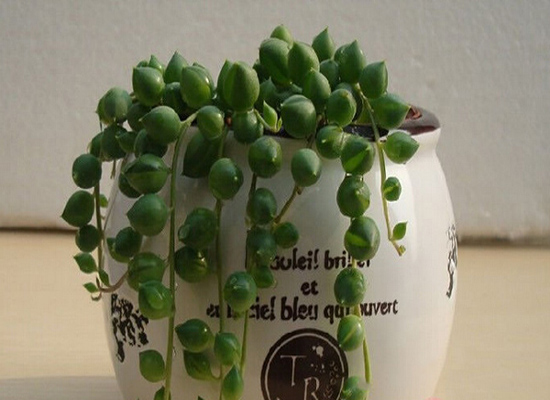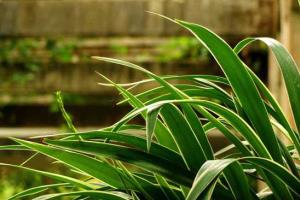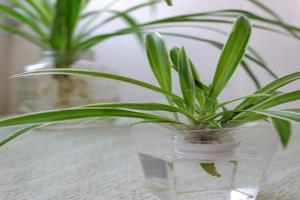What is the culture method of the orchid? the detailed explanation of the culture method of the orchid
Buddha bead orchid, is a kind of orchid, because its leaf shape is oval spherical fleshy. Buddha bead hanging orchid relatively special appearance, quite a large audience, therefore, the family cultivation of Buddha bead hanging orchid is also quite common. So, what is the culture method of Buddha bead orchid? This paper intends to introduce the culture method of Magnolia lanceolata for your reference.

Buddha beads hanging orchid, its scientific name is Jade Pearl, there is also a very romantic name: lover's tears. Green fleshy spheres, a string of falling on the edge of the planting basin, green all the year round, quite lovely. So how can we cultivate a pearl orchid?
1. Methods of reproduction
The propagation method of Buddha-bead orchid is mostly cymbidium insertion, which can trim the branches and leaves, each section is 8-10 cm, and then insert it into the basin soil, half-covered, the humidity is controlled between 50% and 60%, and take root in 10 days to half a month, supplemented by careful care in order to survive. At this time, it is most beneficial to plant growth to strictly control the amount of water and keep the pot soil in the state between dry and wet.
2. Cultivation and management
Dry rather than wet is one of the key points in the cultivation of Cymbidium. In addition, it is also extremely important to apply thin fertilizer frequently. The so-called dry rather than wet is because the Buddha pearl orchid from southern Africa likes a warm environment and is more resistant to drought than waterlogging. On the other hand, the frequent application of thin fertilizer says that fertilizer should be applied frequently, but each time it is light fertilizer, and one time it can not be fertilized too much, which leads to problems in its growth.
3. Pest prevention
In fact, there are few insect pests in Buddha bead orchids, but this is still the case. Generally speaking, the most common disease of Buddha bead orchid is aphid disease, which occurs in spring. When encountering this kind of phenomenon, it should be killed with 500 times omethoate. And in summer there will be mites, which can be killed 1000 times with triclofenac.
There are the following points for attention in planting and cultivating Buddha beads and orchids:
1. The leaves are succulent and succulent, so they are resistant to drought. Watering should be dry rather than wet in cultivation, which is one of the keys to success. When the weather is dry, you can spray water to the leaves and vines to make up for the lack of moisture and keep the beads green and full.
2. The root system of the plant is very shallow and can be planted in shallow pot. Tiles are generally used to cover the bottom hole, and covered with a layer of cinder or coarse sand to increase air permeability and filtration. Rotten leaf soil is best used in the soil.
3. Sex is warm and humid, cold-resistant and high-temperature resistant, and the optimum temperature is about 20 ℃ ~ 28 ℃. It is almost dormant in the high temperature environment of more than 30 ℃, so it should be watered and fertilized less, otherwise the roots are easy to rot. This is also one of the keys to successful cultivation.
4. In the spring and autumn when the growth is exuberant, "thin fertilizer" should be applied frequently, and 1-3 ‰ nitrogen fertilizer and potassium dihydrogen phosphate are often sprayed on the leaf surface, which is beneficial to the pearl body becoming greener and bigger and improving the ornamental value.
Most hanging orchids prefer a warm and humid environment. However, the Buddha bead orchid, which originated in southern Africa, would rather be dry than wet, which may require the special attention of the breeders.
- Prev

Is Phnom Penh Cymbidium easy to raise? planting method of Phnom Penh Cymbidium
Is Phnom Penh Cymbidium easy to raise? planting method of Phnom Penh Cymbidium
- Next

The culture method of hydroponic orchid teaches you to nurse hydroponic orchid.
The culture method of hydroponic orchid teaches you to nurse hydroponic orchid.
Related
- Wuhan Hospital Iron Tree Blooming Result Was Instantly Frightened by the Gardener Master
- Which variety of camellia is the most fragrant and best? Which one do you like best?
- What is the small blue coat, the breeding methods and matters needing attention of the succulent plant
- Dormancy time and maintenance management of succulent plants during dormancy
- Minas succulent how to raise, Minas succulent plant pictures
- What are the varieties of winter succulent plants
- How to raise succulent plants in twelve rolls? let's take a look at some experience of breeding twelve rolls.
- Attention should be paid to water control for succulent plants during dormant period (winter and summer)
- Watering experience of twelve rolls of succulent plants
- Techniques for fertilizing succulent plants. An article will let you know how to fertilize succulent plants.

